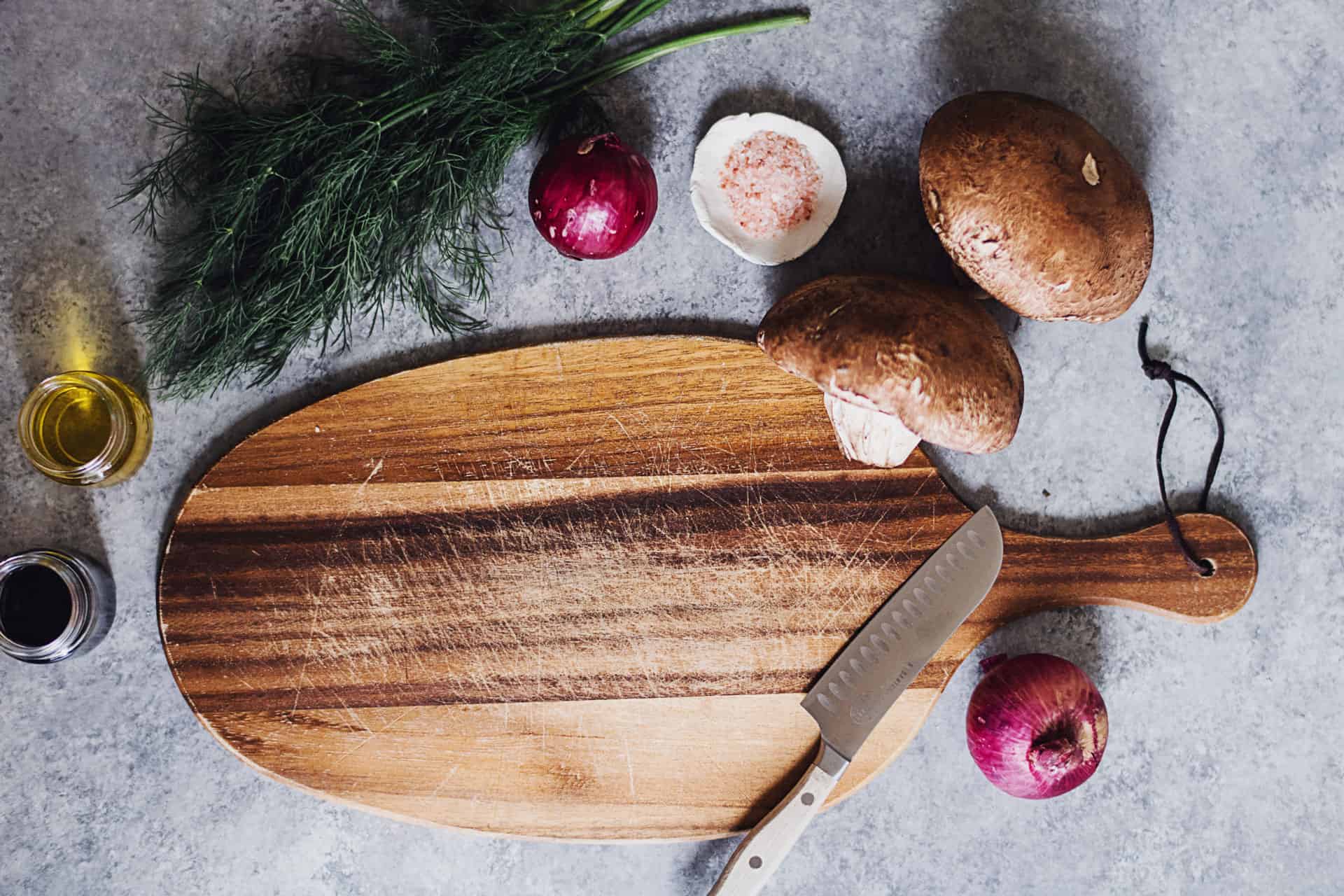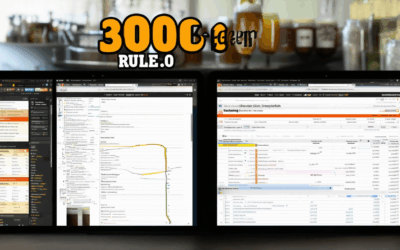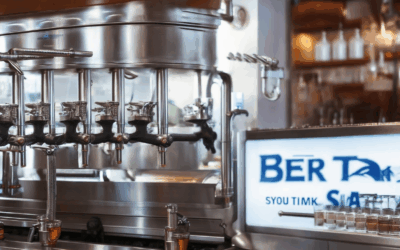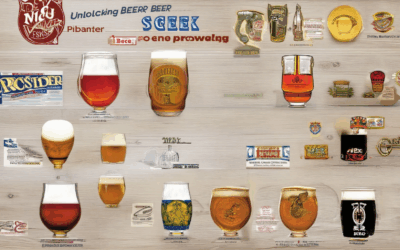Beer brewing is an art form that combines passion, precision, and a deep understanding of the processes that transform simple ingredients into complex flavors. At its core, beer production relies on meticulous beer protocols—a structured approach to ensuring every step, from ingredient selection to fermentation, results in a consistently exceptional product. Whether you’re a homebrewer looking to elevate your craft or a professional brewer aiming for perfection, mastering these essential beer protocols is key to crafting beers that delight and impress.
Key Takeaways: Mastering Beer Brewing Protocols
- Malt Selection: Optimize malt selection for flavor and consistency by choosing high-quality base malts and incorporating specialty malts for unique character.
- Yeast Management: Achieve optimal fermentation by pitching yeast at the right rate and maintaining precise fermentation temperatures for a clean and efficient process.
- Water Treatment: Fine-tune water treatment to match your beer style, ensuring proper adjustment of pH levels and mineral content for balanced flavor.
- Boiling and Mashing: Master boiling and mashing techniques to effectively extract sugars, manage bitterness, and avoid off-flavors through controlled temperature and efficiency.
- Fermentation Process: Control fermentation conditions to guide yeast activity, monitor for off-flavors, and achieve desired flavor profiles through precise temperature control.
- Hops Utilization: Enhance flavor and aroma by strategically utilizing hops during boiling and late addition for bitterness and aromatic complexity.
- Final Touches: Ensure a polished finish by conditioning, carbonating, and cold-laging your beer for optimal clarity and mouthfeel.

Best Beer-Making Protocols for a Perfect Brew
The art of brewing beer involves a meticulous process that ensures every aspect contributes to the final product’s quality. Here’s a structured approach to crafting the perfect brew:
1. Water Quality and Treatment
Water plays a pivotal role in beer flavor. Use filtered water to eliminate impurities. Consider the water profile—hard or soft—to complement your recipe. Soft water is ideal for lighter beers, while hard water enhances maltiness.
2. Malt Selection and Preparation
Select high-quality malt, focusing on two-row malt for a balanced flavor. Incorporate specialty malts for unique characteristics. Adjust ratios based on beer style—using more Munich for Oktoberfest, for instance.
3. Yeast Management
Choose the correct yeast strain for your beer style. Pitch adequate amounts (e.g., 0.5 million cells/mL for ales, 0.8 million for lagers) to ensure proper fermentation. Monitor temperature closely (50-70°F for ales, 48-52°F for lagers) to optimize flavor and attenuation.
4. Fermentation Control
Ferment ales at warmer temperatures (68-72°F) for quicker finishes, while lagers require cooler conditions (50-58°F) for extended periods (7-12 days for ales, 8-12 weeks for lagers). Use a fermometer for precision.
5. Boiling Techniques
Boil using a copper coil for consistent heat distribution. Maintain a rolling boil to preserve volatile aromas. Mashing—use a mash tun with water-to-grain ratios of 5:1 for optimal extraction. Lauter efficiently by allowing wort to drain through the grain bed, adjusting temperature to 140°F for fly sparging.
6. Hopping Protocol
Add hops during boiling for bitterness and flavor. Use 60-minute boils for higher IBUs. Experiment with different hop varieties—Amarillo for citrus, Fuggle for earthiness. Dry hop in secondary fermentation for added aroma, typically 24-48 hours.
7. Aging and Conditioning
Age lagers at cold temperatures (32-35°F) for at least 8 weeks. Condition by adding carbonation (2-3 volumes CO2) and sweetness (10-20g/L glucose or lactose). Evaluate flavor before bottling to ensure harmony.
8. Equipment Choice
Opt for a three-vessel system (mash, kettle, whirlpool) for precise control. Use a thermowell for monitoring wort temperature. Consider all-in-one systems for simplicity, balancing ease of use with control needs.
9. Sanitation Practices
Maintain strict hygiene with daily cleaning schedules. Use star sanitizers and iodophor for equipment. Sanitize at key steps—boiling, transferring, and before fermentation to prevent contamination.
10. Tasting and Evaluation
Assess aroma, appearance, mouthfeel, and flavor. Compare against benchmarks or seek feedback. Adjust recipes based on blind tastings to refine your process.
By following these protocols, you can craft a beer that excels in flavor, aroma, and overall quality, delighting both novice and experienced palates.
Best Beer Protocols for Making a Perfect Brew
To craft the perfect beer, adhere to these proven brewing protocols:
Malt Selection
- Pilsner Malt : Ideal for light, crisp beers like lagers and IPAs. Provides a clean, grainy flavor.
- Munich Malt : Adds depth and sweetness, perfect for amber ales and wheat beers.
- Wheat Malt : Enhances body and head retention, commonly used in hefeweizens and stouts.
Water Quality
- pH Level : Aim for a pH of 5.2-5.8 for optimal enzymatic activity. Use a water testing kit to measure.
- Mineral Content : Adjust with brewing salts (CaCl 2 or MgSO 4 ) to match your water profile.
- Hardness : Soft water is recommended for most ales, while harder water suits stouts and porters.
Yeast Management
- Sanitation : Clean all equipment thoroughly before use to prevent contamination.
- Aeration : Provide oxygen during the initial stages of fermentation for healthy yeast growth.
- Fermentation Temperature : Keep yeast between 68°F-72°F for ale yeasts and 50°F-58°F for lager yeasts.
Hopping Techniques
- Boil Time : Add hops early for better extraction of aromatic compounds.
- Bitterness : Target 60-70 IBU for balance, adjusting based on beer style.
- Flavor Addition : Aerate hops in the whirlpool for extended contact time.
Conditioning
- Carbonation : Use a carbonation calculator to determine ideal levels based on beer type.
- Maturation : Age beer for at least two weeks after fermentation for better flavor development.
Serving Recommendations
- Temperature : Serve lagers at 38°F-42°F and ales at 52°F-56°F.
- Glassware : Use appropriate glassware like tulip glasses for head retention.
By following these protocols, you can consistently brew high-quality beers. Experiment with different ingredients and techniques to develop unique flavors.

Essential Beer Protocols for Making a Perfect Brew
To craft a perfect brew, adherence to precise beer protocols is essential. Below are the key steps and guidelines that ensure a successful fermentation process:
- Ingredients Selection
- Malt: Select high-quality base malts and specialty malts based on the beer style. Malt type significantly influences flavor, body, and sweetness.
- Hops: Choose bittering hops for balance and aroma hops for finishing. Hops contribute bitterness, flavor, and aroma, which are critical for the final taste.
- Yeast: Use authentic brewing yeasts tailored to the beer style. Different yeasts yield varied flavors, from fruity esters to clean profiles.
- Water: Optimize water composition for the beer style, adjusting pH and mineral content to enhance flavor and fermentability.
- Fermentation Process
- Temperature Control: Maintain consistent fermentation temperatures. Different beer styles require specific ranges (e.g., lagers at 7-13°C, ales at 18-24°C).
- Aeration: Ensure adequate oxygen levels during the initial stages to activate yeast and promote healthy fermentation.
- Fermentation Time: Extend fermentation periods for complex beers to allow deeper flavor development.
- Conditioning and Carbonation
- Primary Fermentation: Transfer the beer to a secondary vessel to continue fermentation and allow settling of solids.
- Carbonation: Add carbon dioxide or natural carbonation sources like lactobacillus for a crisp finish. Adjust levels based on desired mouthfeel.
- Force-Carbonation: Use CO2 systems for precise carbonation levels, ensuring consistency in every batch.
- Water Treatment
- Adjust pH: Target a pH range of 5.2-5.8 for optimal enzymatic activity and flavor balance.
- Mineral Balance: Analyze and adjust water minerals to match the beer recipe, avoiding harsh or off-flavors.
By following these protocols, brewers can consistently produce high-quality beers with distinct character and complexity. Explore more detailed guides and resources on The Goods On Tap for advanced brewing techniques and equipment reviews.

What Are the Key Beer Protocols for Achieving the Perfect Brew?
To craft the perfect brew, adherence to proven beer protocols is essential. Below are the critical steps and guidelines that every brewmaster should follow:
- Malt Selection :
- Choose high-quality base malts that align with the beer style.
- Consider specialty malts for unique flavors and colors.
- Optimize malt extraction efficiency for consistent yields.
- Yeast Management :
- Pitch yeast at the correct rate based on the beer’s attenuation.
- Maintain proper fermentation temperature to encourage desired metabolic activity.
- Monitor yeast health closely to ensure a clean fermentation.
- Water Treatment :
- Adjust water profile to match the beer style (e.g., hard vs. soft water).
- Use reverse osmosis water for consistency and adjust pH levels appropriately.
- Consider water salts and minerals to enhance flavor complexity.
- Boiling and Mashing :
- Boil hops for bitterness, flavor, and aroma, depending on the recipe.
- Mash at optimal temperatures to extract desired sugars and starches.
- Adjust mash pH to ensure smooth fermentation and prevent off-flavors.
- Fermentation Process :
- Use proper aeration to promote yeast health and activity.
- Control fermentation temperature to achieve desired outcomes.
- Monitor for off-flavors and adjust accordingly.
- Hops Utilization :
- Add hops during the boil for bitterness and early flavor contribution.
- Use late addition hops for aromatic compounds.
- Experiment with different hop varieties for unique flavor profiles.
- Final Touches :
- Condition the beer using fining agents like Irish moss or silica gel.
- Cold lager for improved clarity and mouthfeel.
- Carbonate according to the beer style (e.g., higher carbonation for IPAs).
By mastering these beer protocols, you can consistently craft beers that delight the senses and meet the expectations of even the most discerning beer enthusiasts. Explore more expert tips and resources on The Goods On Tap to elevate your brewing process.
What Are the Key Beer Protocols for Achieving the Perfect Brew?
To craft the perfect brew, adherence to proven beer protocols is essential. Below are the critical steps and guidelines that every brewmaster should follow:
- Malt Selection :
- Choose high-quality base malts that align with the beer style.
- Consider specialty malts for unique flavors and colors.
- Optimize malt extraction efficiency for consistent yields.
- Yeast Management :
- Pitch yeast at the correct rate based on the beer’s attenuation.
- Maintain proper fermentation temperature to encourage desired metabolic activity.
- Monitor yeast health closely to ensure a clean fermentation.
- Water Treatment :
- Adjust water profile to match the beer style (e.g., hard vs. soft water).
- Use reverse osmosis water for consistency and adjust pH levels appropriately.
- Consider water salts and minerals to enhance flavor complexity.
- Boiling and Mashing :
- Boil hops for bitterness, flavor, and aroma, depending on the recipe.
- Mash at optimal temperatures to extract desired sugars and starches.
- Adjust mash pH to ensure smooth fermentation and prevent off-flavors.
- Fermentation Process :
- Use proper aeration to promote yeast health and activity.
- Control fermentation temperature to achieve desired outcomes.
- Monitor for off-flavors and adjust accordingly.
- Hops Utilization :
- Add hops during the boil for bitterness and early flavor contribution.
- Use late addition hops for aromatic compounds.
- Experiment with different hop varieties for unique flavor profiles.
- Final Touches :
- Condition the beer using fining agents like Irish moss or silica gel.
- Cold lager for improved clarity and mouthfeel.
- Carbonate according to the beer style (e.g., higher carbonation for IPAs).
By mastering these beer protocols, you can consistently craft beers that delight the senses and meet the expectations of even the most discerning beer enthusiasts. Explore more expert tips and resources on The Goods On Tap to elevate your brewing process.

Key Steps in Beer Protocols for Crafting the Perfect Brew
To craft the perfect brew, follow these essential steps rooted in traditional beer protocols:
- Malt Selection
- Choose high-quality malted barley, which forms the backbone of your beer.
- Opt for base malts like Pale Ale or Pilsner for a crisp profile.
- Consider specialty malts for unique flavors, such as Munich for richness or Wheat for hoppiness.
-
Water Treatment
- Use soft or medium-hard water for optimal extraction.
- Adjust water profile to match beer style; hard water enhances bitterness, while soft water complements malt sweetness.
- Boil water thoroughly before use to remove impurities.
-
Boiling Process
- A vigorous boil ensures consistency and removes unwanted compounds.
- Aim for a rolling boil to maintain steady temperature during the entire process.
- Use a thermometer to monitor boiling temperature, typically around 100°C (212°F).
-
Mashing
- Grind grains coarsely for efficient extraction.
- Mash at appropriate temperatures based on malt type; lower temps for lighter beers, higher for stouts and porters.
- Stir constantly to prevent dough formation and extract maximum sugar.
-
Fermentation
- Use a clean yeast starter for consistent fermentation.
- Maintain ideal temperatures between 18-24°C (64-75°F) for most ale yeasts.
- Ferment for 1-2 weeks, depending on yeast strain and desired flavor profile.
-
Conditioning
- Add carbonation to enhance fizz and mouthfeel.
- Use natural methods like kegging or force-carbonating for better control.
- Aged beers benefit from extended lagering periods for smoother taste.
-
Packaging
- Bottle or keg your beer promptly after conditioning.
- Ensure bottles are clean and properly sealed to prevent contamination.
- Label with relevant details, including style, brewery, and date.
By mastering these steps and respecting beer protocols, you can craft a beer that delights the senses and stands out in the market. Explore more resources on The Goods On Tap for brewery reviews and beer style guides.





0 Comments